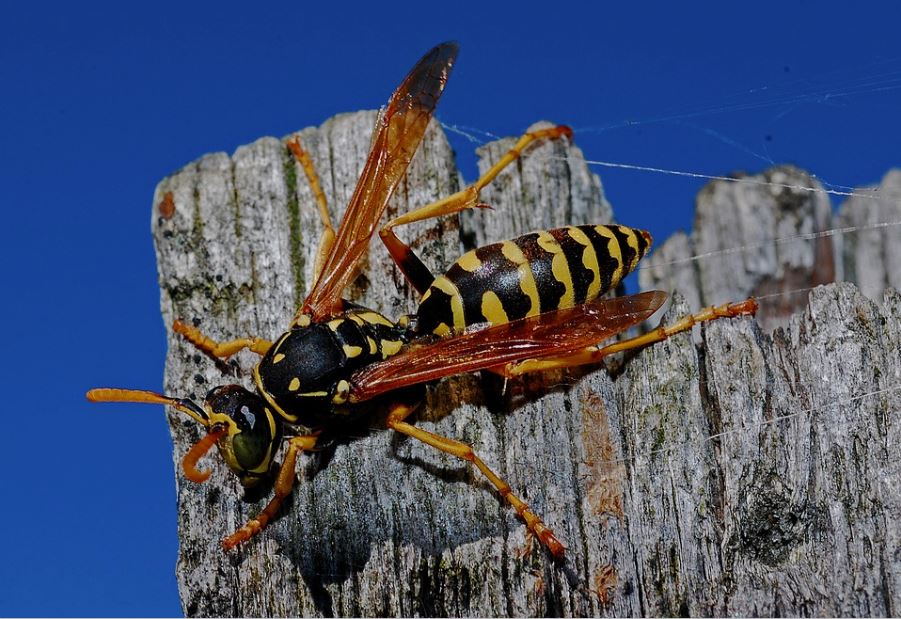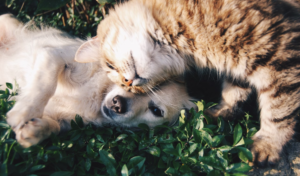
A few stray pests on your property might not seem like a big deal, but those bugs could wreak havoc on your dog’s health. Even if your dog is up to date on their vaccinations, not everything can be vaccinated against and they can still contract various illnesses when exposed in the right way. While you shouldn’t become paranoid and keep your dog isolated from nature, these are a few bugs to keep an eye out for and ways you can keep them away from your dog.
Wasps
Most wasp stings aren’t life-threatening, but your dog might have an allergic reaction to some of the toxins that are inside the stinger. Your dog could also get stung in the mouth should they try to bite the wasp (and dogs usually do.) While the swelling can create a humorously comical picture, this can be dangerous and cause your dog’s airways to swell shut. To keep wasps out of your home, you should maintain your home’s insulation (preventing unnecessary entrances that a wasp can crawl through,) use screens on your patio door and windows, and avoid leaving your doors or windows open on hot summer days when wasps are out hunting the sweet smells of your kitchen. You can also hang insect traps in your trees and near common nesting places, like your rain gutter, to reduce the likelihood of your dog running afoul of wasps while outside.
Spiders
Much like wasp stings, most spider bites aren’t deadly. That being said, there are just over 40,000 species of spiders, and almost all of them have some type of venom. Some of the most dangerous household spiders include black widows, brown widows, and brown recluses. It may be tempting to just let the dog snap it up as they are prone to do. However, while this is perfectly safe for most spiders, it is important to remember that getting bitten by or ingesting a more toxic spider can have serious effects on your dog’s health. If you see widow spiders or other common toxic arachnids, don’t just let your dog take care of it, take steps to curtail an infestation for the health and safety of your family and your pet.
Caterpillars
Caterpillars usually seem harmless, but they can be poisonous to smaller pets. When a dog eats a caterpillar, they will most likely vomit right away. If you aren’t able to identify what type of caterpillar they consumed, then you should head to your local veterinarian’s office. Some of the most common signs that a dog was poisoned include lethargy, whining, diarrhea, and excessive drooling. Part of the toxicity of caterpillars comes from toxic plants that they eat. If your yard is free of pet-toxic plants, then the likelihood of your dog eating one of these caterpillars is greatly reduced. However, it is important to know that not every toxic plant is intuitively so, such as the leaves of tomato plants that host the tomato hornworm.
Cockroaches
While dogs are great at preventing infestations and are generally safe to snap up whatever bugs catch their fancy, cockroaches can be a particularly stubborn infestation and can carry microscopic eggs that give stomach worms to your dog when ingested. These and other illnesses can be transferred to your dog this way, making it essential to take your own measures to remove cockroach infestations if they come into your home. When working with a pest control company, make sure find companies like ABC Pest and others that can offer pet-safe solutions and non-toxic sprays. In addition to scheduling regular pest control services, you should also make sure that cockroaches don’t have any access to food or water in your home by eliminating standing water from leaks and easily accessible trash.
If you think that your dog might have eaten or been stung by one of these pests, then be sure to keep an eye out for symptoms of irritation, swelling, or illness. If you know that one of the pests they ate was a toxic one, then scheduling a vet appointment immediately is important to your dog’s health and wellbeing. While these bugs can be very dangerous, taking basic precautionary measures to keep pests from your home is the best way to protect your dog.


